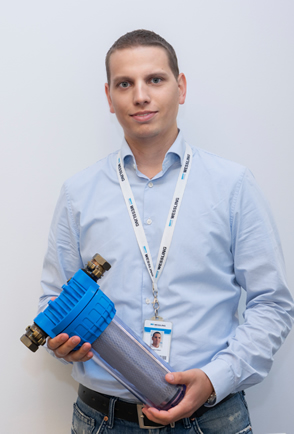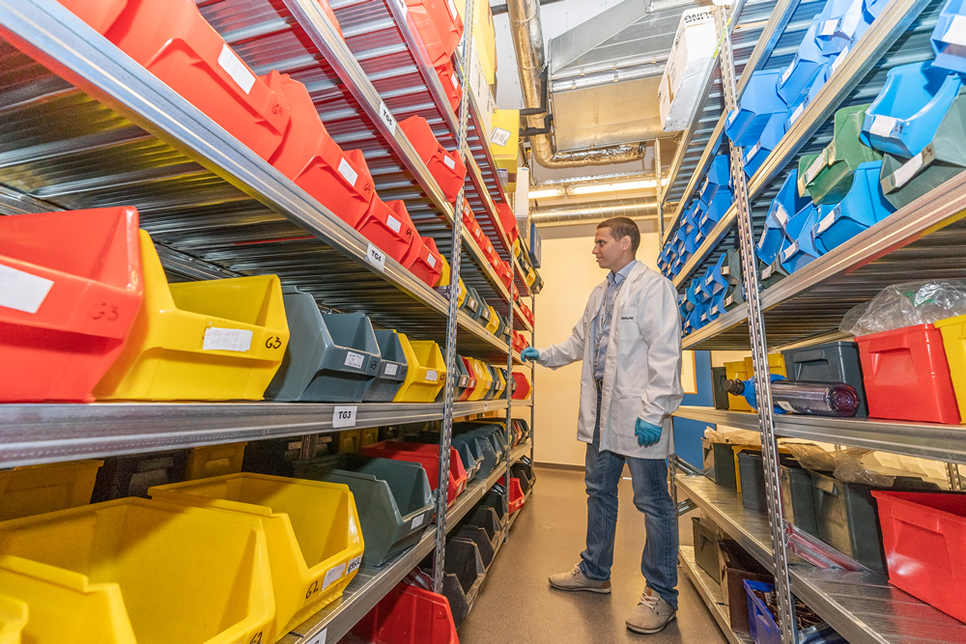
Gábor Bordós, project leader at WESSLING Hungary Ltd
The call for proposals “Support of business RDI activities (VÁLLALATI KFI_16)” aims to facilitate the research, development and innovation activities of domestic businesses resulting in new marketable products or technologies, including prototypes, with high intellectual added value. Wessling Hungary Ltd’s funded project perfectly met these requirements as it aims to gain a better understanding of perhaps the most serious environmental problems in the near future.
The microplastic pollution of natural waters is an increasingly pressing environmental problem globally: virtually all countries of the world are affected. This gives particular importance to projects aimed at monitoring the level of pollution. Plastic waste released to rivers and seas (mainly from abandoned packaging materials, microfibres from washing synthetic clothes or microbeads used in cosmetics, for instance) may persist for a very long time. Although they get broken down to smaller parts, the fibres never fully degrade. Plastic particles smaller than 5 mm in diameter are usually called microplastics. These particles may have an unpredictable impact on our environment and, ultimately, on our health. When swallowed, the tiny pollutants can make sick or even kill marine animals. The microparticles ingested by fish caught for food then may get into the human body.
Although it is mainly marine pollution that gets media coverage, it would be wrong to think that inland waters in Hungary are not affected by the problem. Our natural waters are contaminated to an extent similar to other European rivers and lakes.
– In a previous study we examined the relationship between the water and sediment quality of fish ponds and the meat quality of fish. We also measured microplastic concentration and not only in fish ponds but also in the Tisza River – Gábor Bordós, project leader at WESSLING Hungary Ltd said in response to our question. – According to the results, there are about 10 fragments larger than 0.1 mm but smaller than 2 mm in the Tisza per cubic metre. These results are the same order of magnitude than the results of other European studies. Microplastics have been shown in all water and sediment samples taken from the drainage basin of Tisza as well.
However, the results of WESSLING are not fully comparable with other foreign studies, due to the different methodology used. The funded project was launched with the specific aim of developing a uniform sampling and sample preparation method that can be taken over by other professionals, triggering a kind of a standardisation process resulting in more comparable research outputs. It is, however, already clear that polyethylene and polypropylene accounted for a large part of the micropollutants. This is no surprise, though, as these are the most commonly used types of plastic in the world.
In international studies, water samples are taken mainly at sea by plankton nets. The reason is that marine biologists first observed plastics in the samples when they studied plankton. The nets have a mesh size of 0.3 mm diameter and are towed horizontally by boats. This method, however, cannot be used in most Hungarian waters as they are much smaller and shallower than oceans. So, new, uniform sampling procedures have to be developed that can be used in freshwater environments as well.
– The system we have designed is built on a simple idea. Water is pumped through filters of different mesh size. The advantage of this method is that the plastic parts of the equipment can be better eliminated than in the case of plastic plankton nets, and that the system can be used efficiently in domestic terrain and water conditions – Gábor Bordós says. – In environmental analytics, it is a basic principle to avoid using sampling equipment made of the same material as the material we want to measure (so that particles shed by the equipment will not interfere with the results). Plastics, however, are so prevalent today that they are difficult to replace in many cases. In the new project we try to make our sampling equipment completely plastic-free.
So the project aims to examine the environmental problems caused by microplastics as accurately as possible. Naturally, the ultimate goal is to reduce the amount of such particles in natural waters. And prevention is apparently the best way to achieve this.
– Modern science enables us to examine the occurrence of microplastics and their environmental effects with increasing accuracy. Still, at the current state of science, the removal of microplastics and the remediation of waters seem impossible – Gábor Bordós says. – I don’t think it is feasible to install large filtering systems on our natural waters to selectively collect microplastics from the water. This would be an unrealistic goal both in technical and economic terms, so we have to place the emphasis on prevention. We have to reduce the amount of plastic used and released to waters, and we have to raise people’s awareness of the problem.







